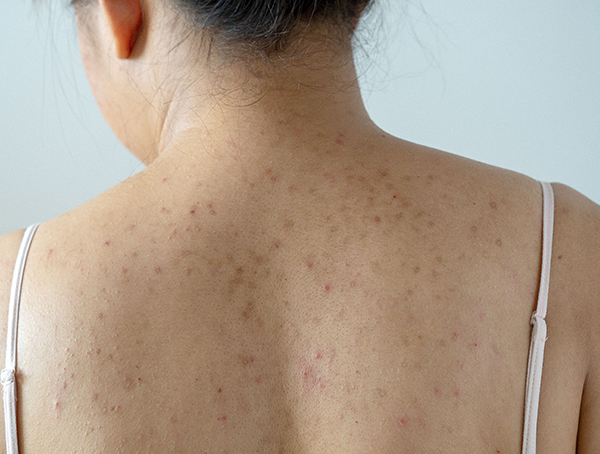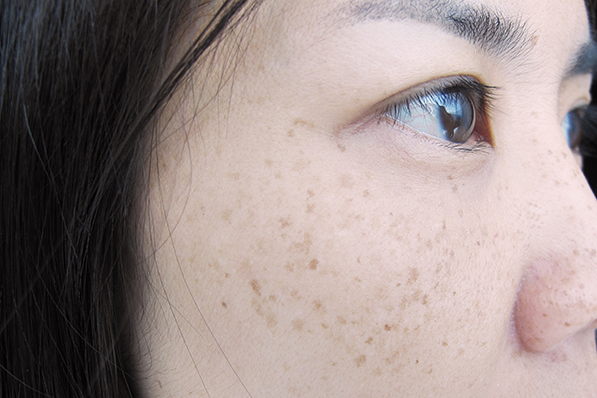What Are All These Splotches on My Skin?
A frequent concern we see at SSDP is skin discoloration. The three most common causes are post-inflammatory hyperpigmentation, melasma, and lentigines. Our board-certified dermatologists can help.
Post-inflammatory Hyperpigmentation
Post-inflammatory hyperpigmentation refers to dark spots that appear on your skin following injury or inflammation. For example, we are all familiar with those long-lasting, annoying dark patches on the lower legs and ankles resulting from scratching mosquito bites.
Some of us may also note dark spots following an injury such as a cut or burn. You may also experience patchy dark discoloration on the skin where you had pimples, eczema, or psoriasis.
The more pigmented your skin is, the more prone it is to developing post-inflammatory hyperpigmentation. Even if you don’t pick pimples, as the inflammatory process resolves, the dark spot may develop. Most post-inflammatory hyperpigmentation is not permanent. It occurs due to leakage of melanin from the epidermis into the dermis below.
Our immune system will eventually clean up this melanin that is not where it’s supposed to be, but it may take up to several months to fade. If you want to speed it up, consult your board-certified dermatologist about topical treatment options.
Melasma
Melasma is a type of patchy dark discoloration that primarily appears on the faces of adult women, but may also rarely affect men. It usually starts off as light brown patches on the cheeks, forehead, and/or upper lip, but may over time become darker and more difficult to cover up with makeup. Sometimes in photos it may look as if your upper lip is dirty or you are growing a moustache. The causes of melasma are unknown, but there are some factors that predispose people to getting it, including genetic factors, elevated estrogen levels (such as during pregnancy or when taking birth control pills), and sun exposure.
Though there is no cure, there are many treatments available that can help lighten the discoloration and brighten your skin tone. Seek consultation with your board-certified dermatologist to determine which treatment is right for you.
Lentigines
Lentigines, sometimes called sun spots, freckles, or age spots, are oval or round, light to dark, brown spots located on sun-exposed areas on the skin. Some people call them “age spots,” some call them “liver spots,” but they are not caused by aging or liver problems. There are several different types, but the most common ones we encounter are those related to sun exposure. Ultraviolet radiation causes an increase in the number of melanocytes in the dermis and an increased amount of melanin pigment in the epidermis, which results in those annoying dark spots. Since we accumulate more sun damage with age, these spots appear later in life and increase in number as we get older.
They are usually nothing to worry about. However, though rare, skin cancer can hide among lentigines. The skin cancer, in this case a melanoma, would appear different from the surrounding dark spots—irregular in shape or color, and changing over time. If you notice one that seems suspicious, have it evaluated immediately by a physician.
If lentigines are bothering you from a cosmetic standpoint, make sure you wear sunscreen with an SPF 30 or higher whenever you are outdoors to prevent them from getting worse. You can also lighten the existing spots by using a retinol cream at night and a vitamin C serum in the morning under your moisturizer with sunscreen.
There are many cosmetic treatments that your board-certified dermatologist can offer for those stubborn spots that just won’t go away with good skin care.




